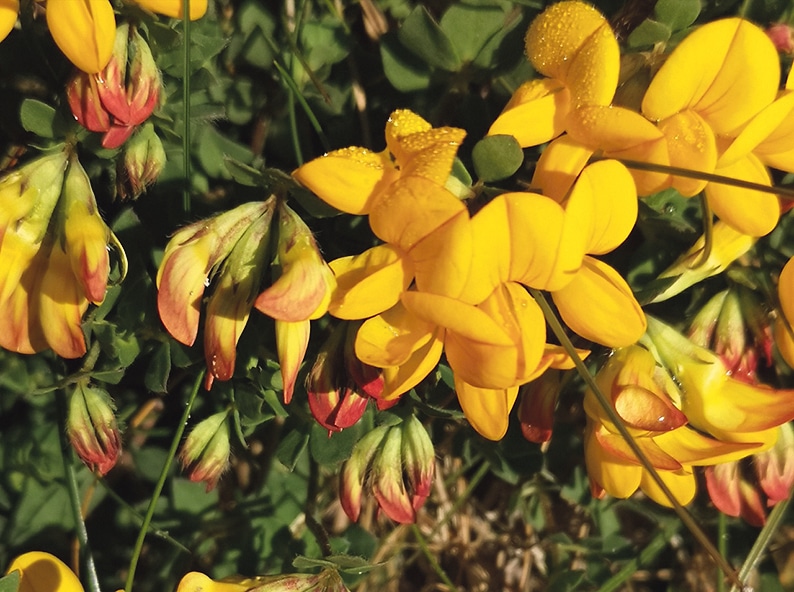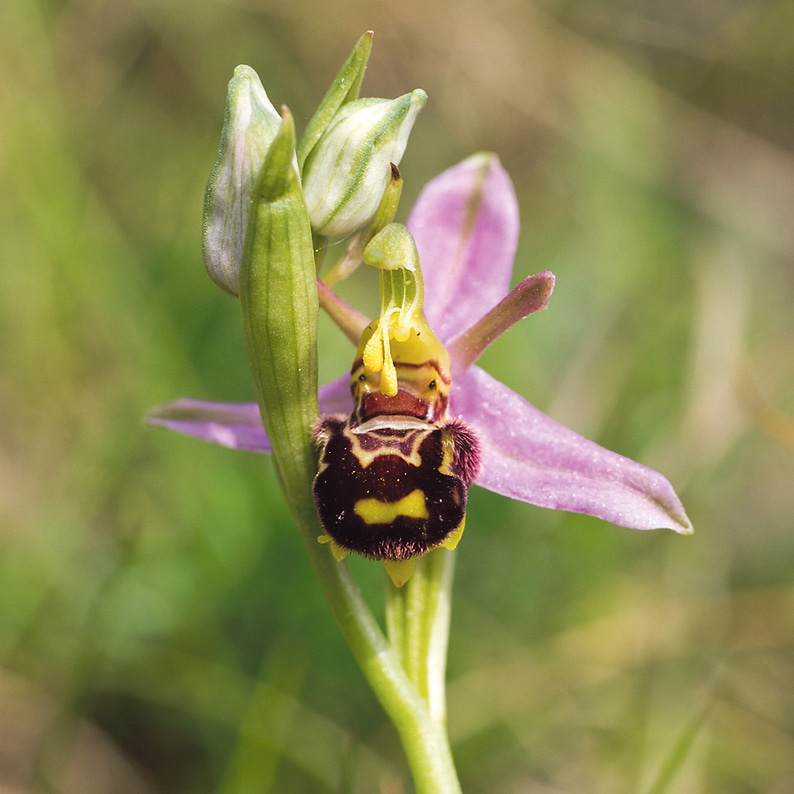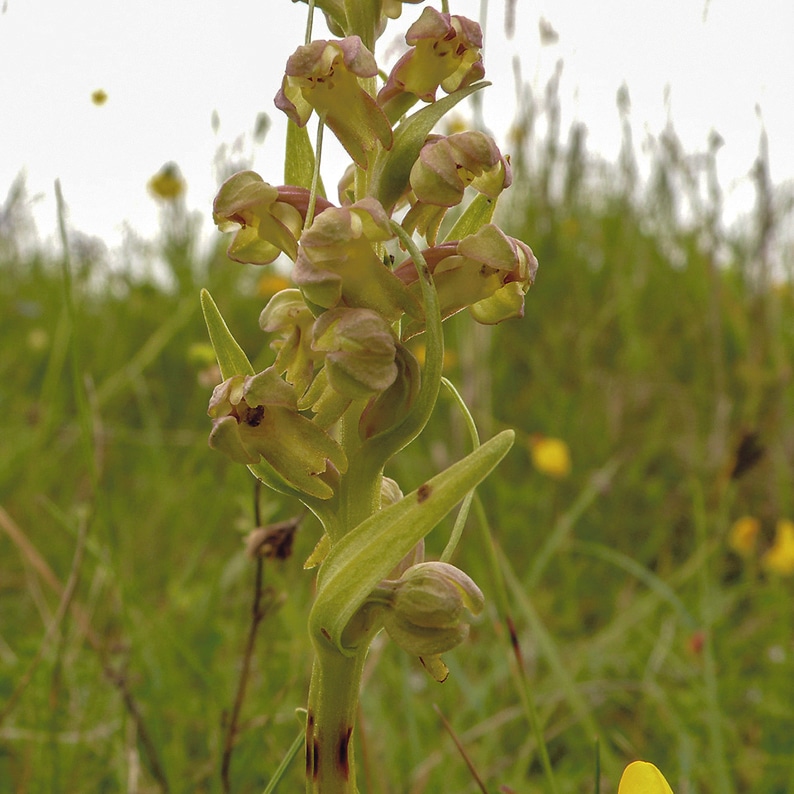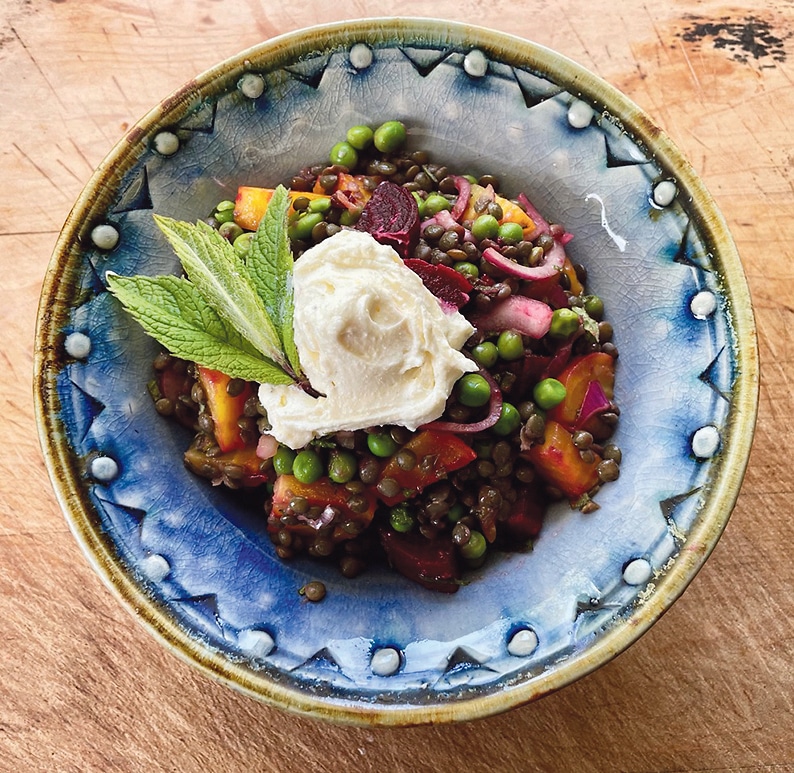Continuing the theme from last month, BirdWatch Ireland (West Cork Branch) committee member Fiona O’Neill, writes on her passion for wildflowers.

Common Bird’s-foot Trefoil (Lotus corniculatus) Pic: Fiona O’Neill 
Bee Orchid (Ophrys apifera). Pic:Nicholas Mitchell 
Frog Orchid (Coeloglossum viride) . Pic:Nicholas Mitchell
During the past year, many people have become more attuned to birdsong and the presence of birds in their surroundings. Early summer is a good time to turn that focus on plants, especially coastal plants, as we naturally gravitate towards the sea. There’s more to the coast than sea and sand; these places are botanically rich.
Most of us are familiar with the ubiquitous Thrift or Sea Pink since we were children, its lollipops of papery pink or white flowers emerging from mounds of evergreen cushions are a sure sign that summer is near. Common Bird’s-foot Trefoil lends a splash of deep yellow sunshine (sometimes orange or with red streaks) to sand dunes and short grassland. It’s a member of the pea family and its narrow brown seed pods resemble a bird’s foot, hence the name. As well as being a delightful plant, it is an important food plant for caterpillars of the Common Blue butterfly, and a rich source of nectar and pollen for many insects.
Some favourite places
West Cork is fortunate to have an abundance of beautiful and unique habitats; some have been designated as special areas of conservation (SACs) because of this. Three of these – Barley Cove, Inchydoney and Harbour View – are popular spots to visit for a walk or for a day by the sea, but there’s more to discover on a visit.
Barley Cove
Well known for its beautiful beach and dunes, Barley Cove is home to many of the common plants you’ll find at the coast, but it also holds botanical treasures, including Autumn Lady’s-tresses, ‘Spiranthes spiralis’, the unusual parasitic plant, Dodder, ‘Cuscuta epithymum’, and the tiny Early sand-grass, ‘Mibora minima’, known only from Barley Cove and North Bull Island, Dublin.
In August, Autumn Lady’s-tresses appear in the short turf of the dunes, it’s a slender orchid with small white and green flowers arranged in a spiral up the stem. The plants can be difficult to spot, but when you do it’s worth getting down to eye level with the flowers to appreciate their scent and subtle beauty.
Dodder is an odd plant, easy to overlook. It’s a parasite that attaches itself to other plants such as gorse, heather, or wild thyme. If you see a tangle of what looks like red string strewn on the ground, stop and take a closer look, it might be Dodder, hopefully not litter.
Inchydoney
Along the high-tide mark at Inchydoney, plants have the odds stacked against them; they cope with salt, wind, lack of moisture, and shifting sands. Those that thrive have fleshy leaves to help retain moisture, and only one has what we might traditionally recognise as a flower, that is Sea Rocket, ‘Cakile maritima’, with four-petaled pale pink or lilac flowers. The others have a variety of inconspicuous flowers, often their leaves and fruits are more noticeable: the silvery Frosted Orache, ‘Atriplex laciniata’, Sea Sandwort, ‘Honckenya peploides’, and Prickly Saltwort, ‘Salsola kali’.
The dunes at the east side of Inchydoney aren’t easily accessible by everyone, they’re quite steep in places, but they are home to a wide variety of attractive flowering plants, including several species of orchid (Bee, Pyramidal, Early-Marsh and Frog Orchids). Scattered throughout the dunes in summer are Wild Thyme, ‘Thymus polytrichus’, Lady’s Bedstraw, ‘Galium verum’, and the little Wild Pansy, ‘Viola tricolor’.
The Inchydoney Dunes Conservation Group works to help conserve and promote awareness of the biodiversity and wildlife of the area. You can get updates on their social media pages.
Harbour View
Furthest east on our whistle-stop tour is Harbour View, part of the Courtmacsherry Bay SAC. Recent works have seen new information signs erected and barriers put in place to prevent vehicles driving on and damaging the dunes.
The sandy path behind the dunes is edged with Lady’s Bedstraw, and on a sunny day in summer its honey scent is a joy. When dried it smells of newly-mown hay and was used in the past in straw mattresses to keep insects and lice at bay. In Scandinavia, it was used as a sedative and analgesic for women in childbirth. Pyramidal Orchid, ‘Anacamptis pyramidalis’, pops up in the short grass adjacent to the path, its shape reflecting the name. Another common plant there is Kidney Vetch, ‘Anthyllis vulneraria’, the flowers range in colour from yellow to pink to wine red.
At the saltmarsh, Thrift and Scurvy-grass (not a grass at all) are abundant in early summer, later the small-flowered plants there may require closer attention to be appreciated, Sea Milkwort, ‘Glaux maritima’, and Lax-flowered Sea-lavender, ‘Limonium humile’.
There are many more places in West Cork to appreciate coastal plants; once you start noticing them your visits to the coast will be greatly enriched.
The Botanical Society of Britain and Ireland (BSBI) regularly organises visits to areas of botanical interest, you can find out more on their website, bsbi.org/ireland, and on social media.
BirdWatch Ireland West Cork Branch
For more information about the Branch contact Nicholas Mitchell at secretary@birdwatchirelandwestcork.ie or join our mailing list by sending an email to mailinglist@birdwatchirelandwestcork.ie.


